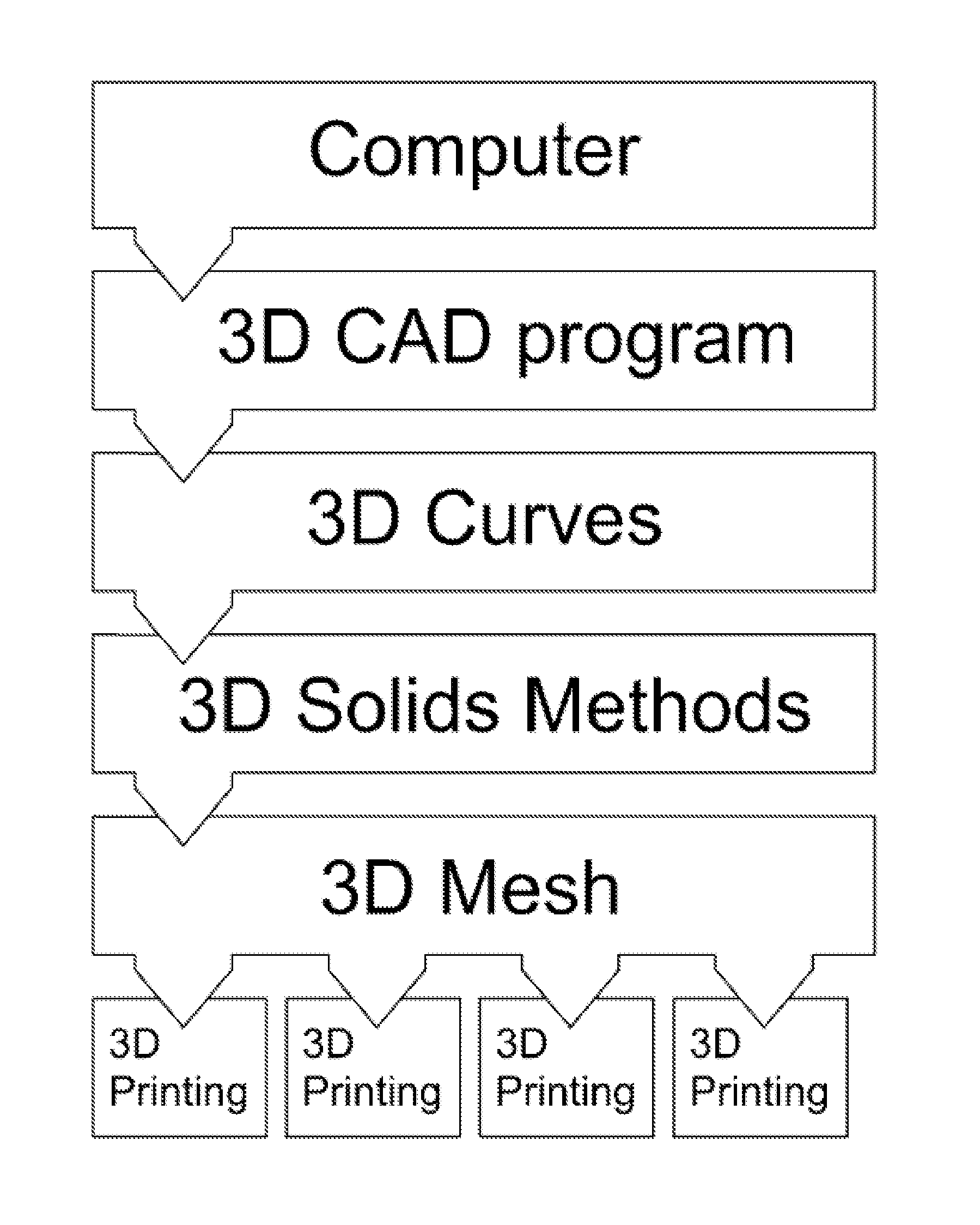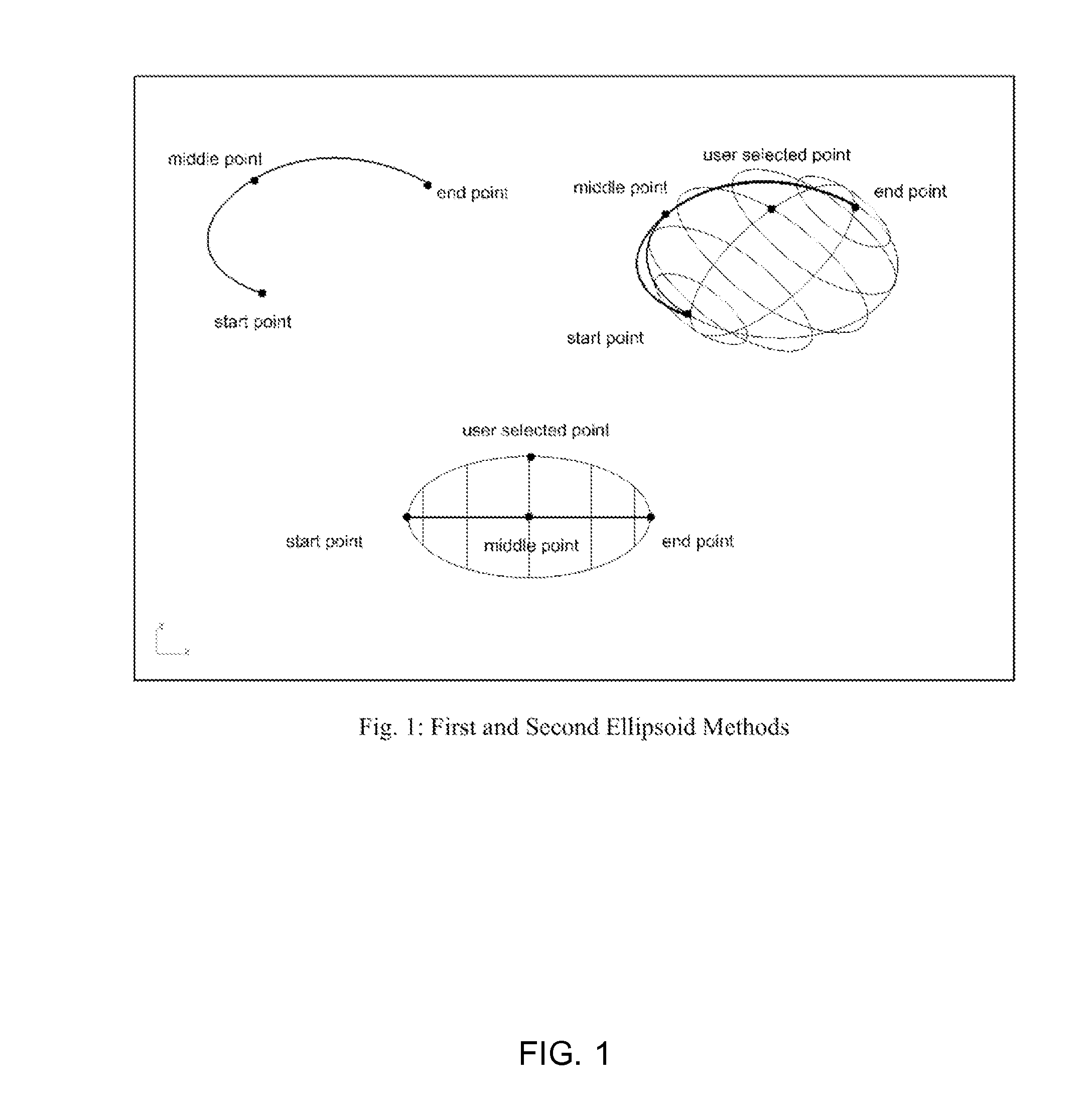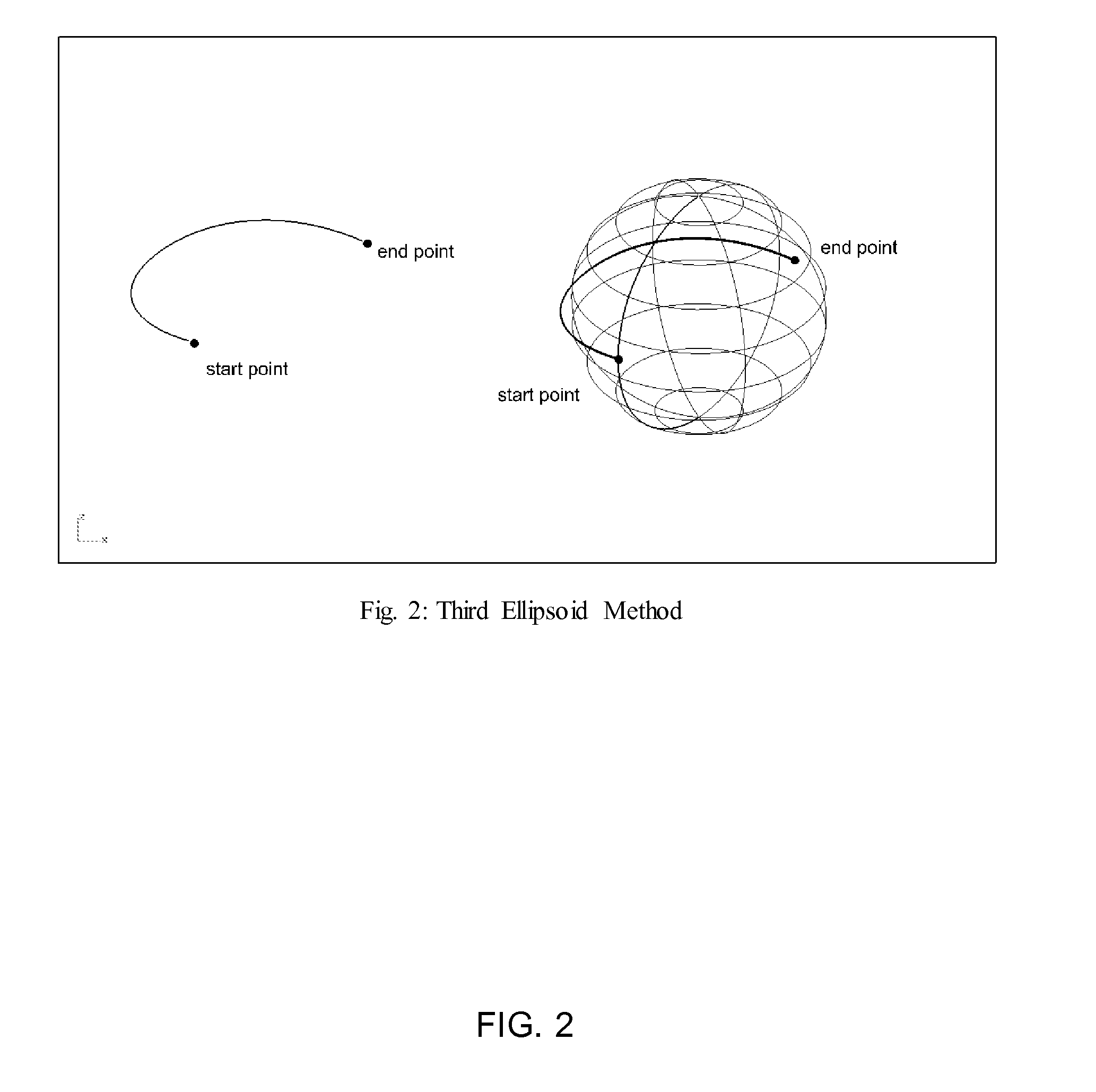Computer-Implemented Methods for Generating 3D Models Suitable for 3D Printing
a computer-implemented and 3d printing technology, applied in the field of 3d cad, can solve the problems of high learning curve, difficult to select unskilled people for useful 3d modeling, and complex models that require more than just creation and placement of 3d shapes. achieve the effect of easy design
- Summary
- Abstract
- Description
- Claims
- Application Information
AI Technical Summary
Benefits of technology
Problems solved by technology
Method used
Image
Examples
examples
[0060]The present invention provides a system and method for generating a representation of an architectural structure, which is printable by a 3D printer.
[0061]FIG. 11 shows a simplified schematic diagram of a process of creating and printing a 3D object, in accordance with the present invention. In one known example, first a user is introduced to a 3D drawing program, for example 3D CAD program; second, at the user interface, a user inputs into the program some primitives, such as points, lines; third, the computer software implements the 3D solid methods described by the present invention, creating a 3D model based on the user input; fourth, the 3D model is further converted to a 3D mesh model by the computer software for 3D printing; and fifth, the software sends out printing commands to the multiple 3D printers locally or on the network for printing.
[0062]The following embodiments illustrate objects and processes to create 3D printable models by the methods described in the pre...
PUM
 Login to View More
Login to View More Abstract
Description
Claims
Application Information
 Login to View More
Login to View More - R&D
- Intellectual Property
- Life Sciences
- Materials
- Tech Scout
- Unparalleled Data Quality
- Higher Quality Content
- 60% Fewer Hallucinations
Browse by: Latest US Patents, China's latest patents, Technical Efficacy Thesaurus, Application Domain, Technology Topic, Popular Technical Reports.
© 2025 PatSnap. All rights reserved.Legal|Privacy policy|Modern Slavery Act Transparency Statement|Sitemap|About US| Contact US: help@patsnap.com



